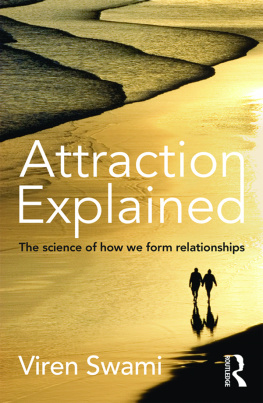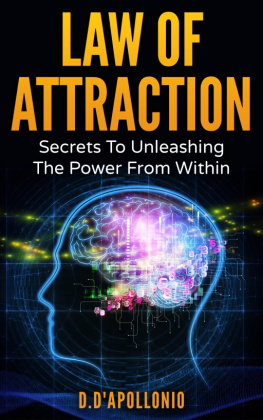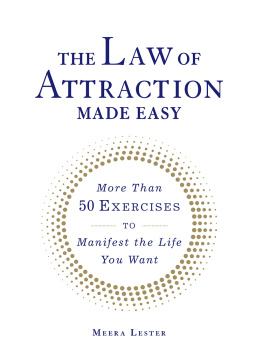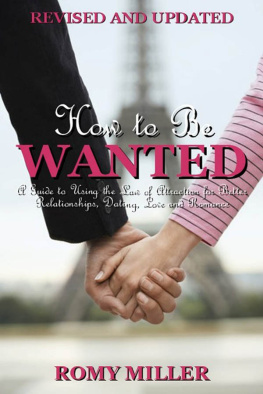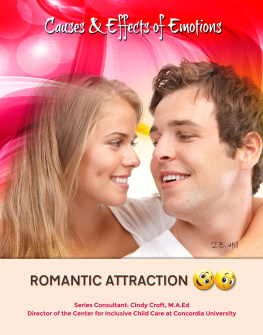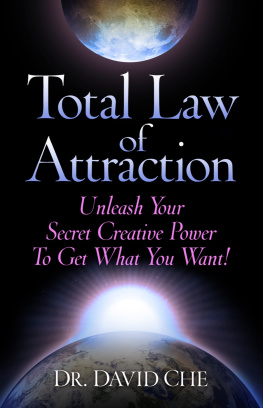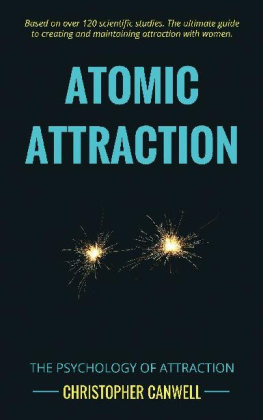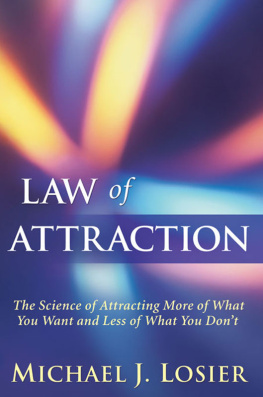Attraction Explained
When it comes to relationships, theres no shortage of advice from self-help experts, pick-up artists, and glossy magazines. But modern-day myths of attraction often have no basis in fact or worse are rooted in little more than misogyny. In Attraction Explained, psychologist Viren Swami debunks these myths and draws on cutting-edge research to provide a ground-breaking and evidence-based account of relationship formation.
At the core of this book is a very simple idea: there are no laws of attraction, no foolproof methods or strategies for getting someone to date you. But this isnt to say that theres nothing to be gained from studying attraction. Based on science rather than self-help clichs, Attraction Explained looks at how factors such as geography, appearance, personality, and similarity affect who we fall for and why.
Viren Swami is Professor of Social Psychology at Anglia Ruskin University in the UK. He is an international expert on attraction and body image, and has written and edited several books on these topics. He is also the founder of Plug In Your Brain, a public engagement initiative to promote the wider understanding of psychology.
This is a beautifully written book, more like a novel than an academic textbook. But dont be misled: the author is a world authority on the topic. Professor Swami has made sure the book is scrupulously accurate and that all assertions are research-based. It is really unputdownable.
Adrian Furnham, Department of Psychology and Language Sciences, University College London, UK
I trusted this author at once because, unlike the psychobabblers, he says from the start that there are no laws of attraction and no foolproof methods for getting someone to date you, let alone jump into bed with you. That isnt to say there is nothing to be gained from studying the processes involved in what draws us together. Its just a lot trickier than most self-help books would suggest. But with precision and no small wit I found myself frequently laughing out loudhe explores the four key factors that shape the formation of most relationships: proximity, appearance, reciprocity and similarity. As he shows, studying attraction or relationships scientifically, far from destroying the magic and mystery of it all, can actually be helpful, whether you aspire to be lover or friend. He also satisfyingly nails my biggest bte noire: that treat em mean is any sort of relationship advice.
Suzie Hayman, agony aunt, relationship counsellor, accredited TripleP (Positive Parenting Programme) parenting educator, broadcaster and author
Attraction Explained
The Science of How we Form Relationships
VIREN SWAMI

First published 2016
by Routledge
2 Park Square, Milton Park, Abingdon, Oxon, OX14 4RN
and by Routledge
711 Third Avenue, New York, NY 10017
Routledge is an imprint of the Taylor & Francis Group, an informa business
2016 Viren Swami
The right of Viren Swami to be identified as the author of this work has been asserted by him in accordance with sections 77 and 78 of the Copyright, Designs and Patents Act 1988.
All rights reserved. No part of this book may be reprinted or reproduced or utilised in any form or by any electronic, mechanical, or other means, now known or hereafter invented, including photocopying and recording, or in any information storage or retrieval system, without permission in writing from the publishers.
Trademark notice: Product or corporate names may be trademarks or registered trademarks, and are used only for identification and explanation without intent to infringe.
British Library Cataloguing in Publication Data
A catalogue record for this book is available from the British Library
Library of Congress Cataloging-in-Publication Data
A catalog record for this book has been requested
ISBN: 978-1-138-93700-0 (hbk)
ISBN: 978-1-138-93703-1 (pbk)
ISBN: 978-1-315-67650-0 (ebk)
Typeset in Minion Pro
by Apex CoVantage, LLC
Christa: For a long time, in my life from before, I had forgotten how to dream. Then, one night in January, I saw you floating, so I photographed you into my heart. Later, when I awoke, I saw you looking back at me and I thought, Im glad you exist in real life.
Contents
Excerpts of Anthony Klines translation of Ovids Metamorphoses are taken from his 2000 translation. Anthony Kline owns the copyright to this content, which is reproduced here with his permission.
The quote from the study by Karen Haandrikman and Inge Hutter, reported in , is published in Population, Space, and Place. It is used here with the permission of John Wiley and Sons.
The personal ads from the study by Donald Strassberg and Brittany English, reported in , is published in Archives of Sexual Behavior and is used here with the permission of Springer.
The scripts from the study by Geoffrey Urbaniak and Peter Kilmann, reported in , is published in Sex Roles. It is used here with the permission of Springer.
The quotes from Annette Markhams study, reported in , is published in Qualitative Inquiry and is used here with the permission of SAGE Publications.
The character evaluation from the study by Andrew Lehr and Glenn Geher, reported in , is published in The Journal of Social Psychology and is used here with the permission of Taylor & Francis.
The example of a chat-up conversation from the study by Christopher Bale and colleagues, reported in , is published in Personality and Individual Differences. It is used here with the permission of Elsevier.
The list of questions from Arthur Aron et al.s (1997) Fast Friends procedure, reproduced in , is published in Personality and Social Psychology Bulletin. It is used here with the permission of SAGE Publications.
The excerpt from Derik Wells article in the Journal of Gay and Lesbian Social Services, reproduced in , is used here with the permission of Taylor & Francis.
Table 4.1 is adapted from Garth Fletcher et al. (1999). Ideals in intimate relationships. Journal of Personality and Social Psychology, 76, 7289.
Table 5.1 is adapted from William Douglas (1987). Affinity testing in initial interactions. Journal of Social and Personal Relationships, 4, 315.
Every effort has been made to contact copyright holders for their permission to reprint all third-party material in this book. The publishers would be grateful to hear from any copyright holder who is not here acknowledged.
The first time Scott sees the delivery-woman on rollerblades, at the Wychwood Branch of the Toronto Public Library, hes lovestruck. For those of you who dont know him, Scott Pilgrim (age: 23; rating: awesome) is a jobless slacker living with his cool gay roommate Wallace Wells (age: 25; rating: 7.5/10) in a one-room basement apartment in Toronto. Scott plays bass guitar in a band called Sex Bob-omb with his friends Stephen Stills (guitar) and Kim Pine (drums), who he once dated in high school. Oh, and Scott hates smoking and considers anyone who smokes to be evil. Still carrying some baggage from a previous bad breakup, Scott has begun dating Knives Chau (age: 17), a high-schooler, mainly because he finds the relationship easy all they do is ride the bus together and talk about her school. Despite Scotts questionable relationship choices, for some time now hes felt an increasing sense of loneliness, a feeling that something isnt quite right.

